Estimated reading time: 3 minutes
Have you done any grafting this year? It’s so nice when things work as they should in the fruit tree nursery.
The winter grafting in Carr’s Organic Fruit Tree Nursery (our on-farm fruit tree nursery) is usually done in September. By November we can see whether they worked or not.
Related Articles
Taming monster fruit trees with renovation pruning
Learn how to use a technique called renovation pruning to tame large, unpruned, and out-of-control monster fruit trees.
How to plant a fruit tree – the easy way
Everything you need to know about how to plant your new fruit trees to get them off to a great start in life.
How to grow your own multigraft or fruit salad tree
Multigraft trees are a no-brainer for many gardens, as they reduce risk and provide a bigger variety of fruit, without taking up more space.
Excitingly, most of them usually do!
A visual measure of success
Grafting demands a certain measure of patience. Regardless of whether you’re using summer bud-grafting or winter grafting techniques, you have to wait to see whether it’s worked or not.
The waiting is always a time of some trepidation. But in the end, there’s no “maybe”. You’ll be able to clearly see whether your grafting worked or not.
You’re going to be faced with irrefutable evidence of the quality of your grafting technique.
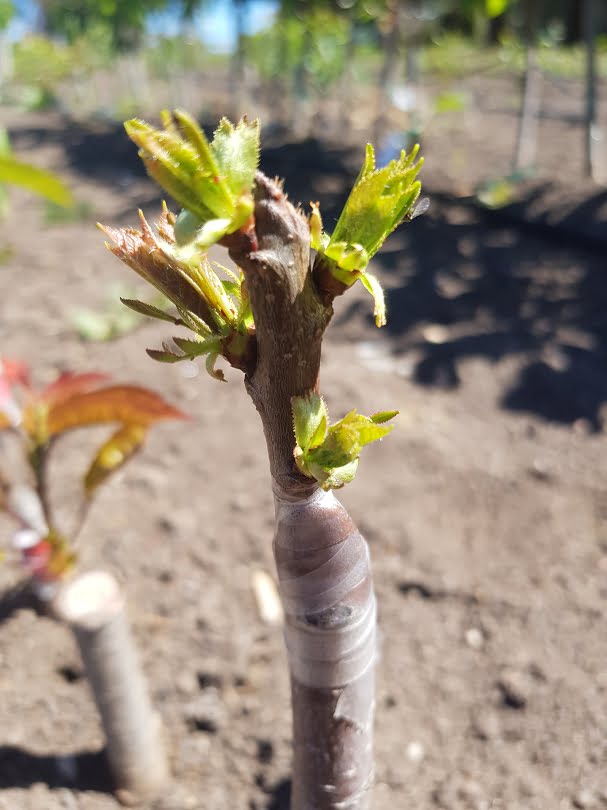
We’re very familiar with this feeling. Our fruit tree nursery mentor (and Katie’s dad) Merv is always there teaching and advising us. But he’s handed over the actual grafting to us – so there’s no hiding. The success or failure is ours to own.
It’s the same for our Grow Great Fruit members. We teach the techniques and are there to mentor them, but they’re the ones who actually have to practice the knife skills.
So it’s incredibly satisfying for us when the success rate (either here on the farm or in our member’s gardens) is good.
Bud-grafting involves the longest wait time. This technique is done in summer, usually around February for us. But you don’t get confirmation on whether it was successful until the following spring.
Grafting aftercare (and other spring jobs)
All grafting requires some careful aftercare. For example, in late winter you need to check whether the buds you grafted the previous summer have “taken”.
If they’re still looking green and sprightly, it’s OK to cut the rootstock back to the bud grafting site. But it’s not a guarantee, and the bud may still die back.
So you’re never really sure of success unless you see lovely new growth coming from the bud like this:
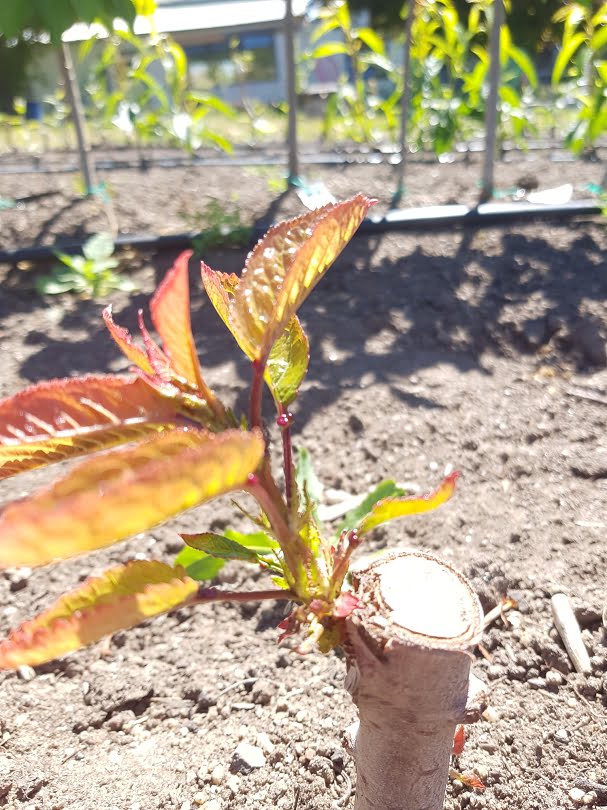
Looking for pruning success
While you’re in the garden checking your grafts, spring is also a great time to keep an eye on your young fruit trees, especially monitoring the establishment pruning cuts that you (hopefully) made in winter.
The point of establishment pruning is to create new branches, in the desired location in the tree. Spring is the best time to notice whether they’ve produced the desired effect.
Wondering what you’re looking for? Here’s an ideal result in a young cherry tree in our orchard.
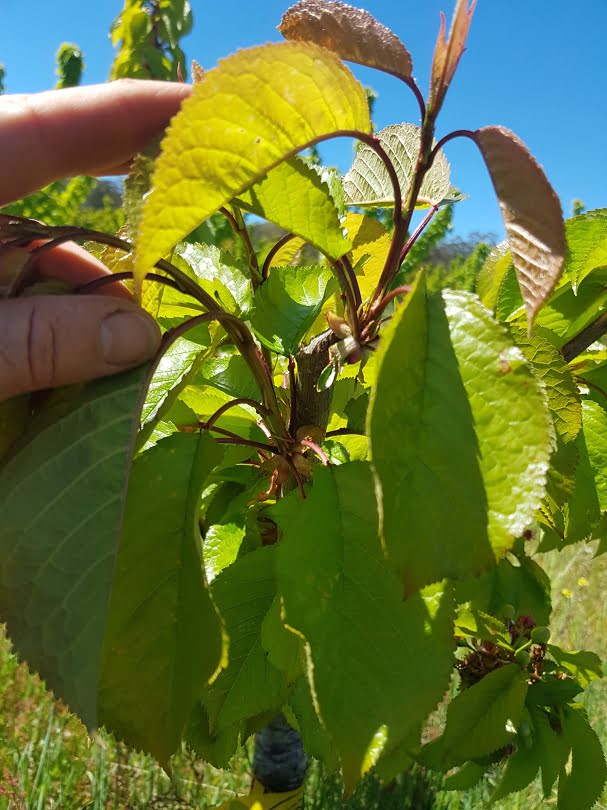
If you look carefully in the middle of the leaves you’ll notice where the main branch has previously been cut. Directly below the cut, you’ll see that three shoots have started growing.
This will create three new branches in this young cherry tree exactly where we want them.
Success is so satisfying!
Related Articles
Taming monster fruit trees with renovation pruning
Learn how to use a technique called renovation pruning to tame large, unpruned, and out-of-control monster fruit trees.
How to plant a fruit tree – the easy way
Everything you need to know about how to plant your new fruit trees to get them off to a great start in life.
How to grow your own multigraft or fruit salad tree
Multigraft trees are a no-brainer for many gardens, as they reduce risk and provide a bigger variety of fruit, without taking up more space.

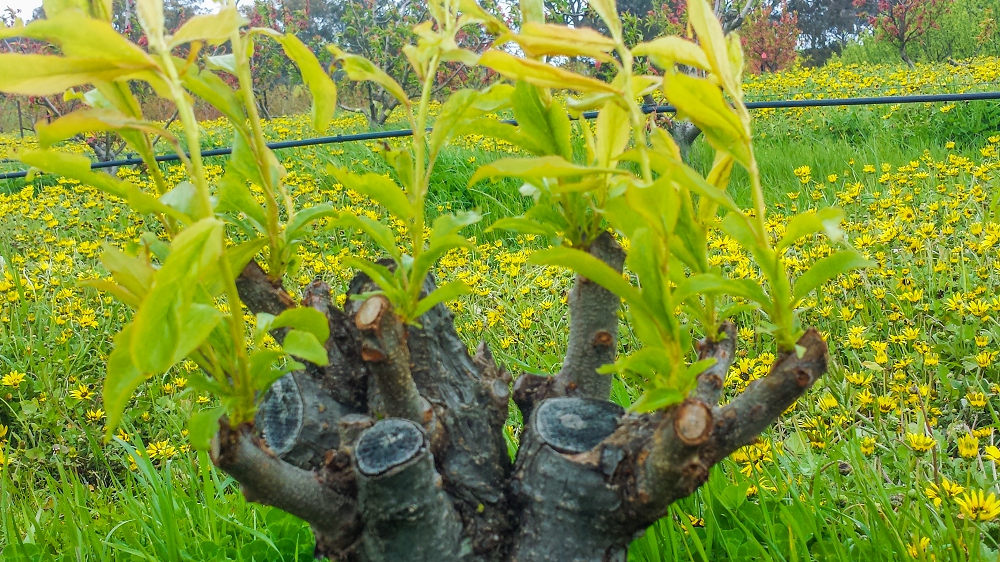
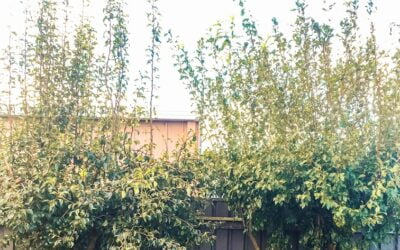

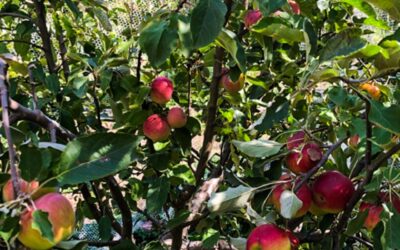


I have finally go a seed to grow so that will be my root stock but I have to be patient as it wont be big enough till next season but cant wait so exciting
Oof, isn’t the waiting hard Karen! Well done on getting this far though, Meg – Grow Great Fruit team.